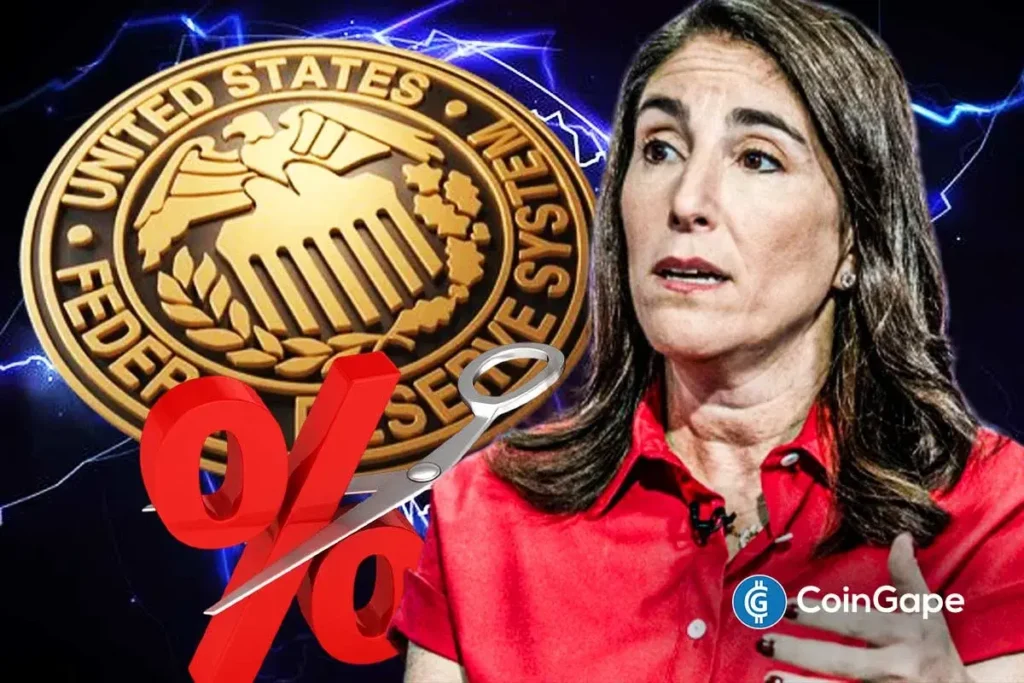The Impact of Potential Fed Rate Cuts on Inflation and the Crypto Market
As discussions around the Federal Reserve’s monetary policy continue, Cleveland Fed President Beth Hammack has positioned herself as a prominent voice, warning against the potential repercussions of further rate cuts. Amid uncertainties regarding the Federal Open Market Committee (FOMC) and its decision at the upcoming December meeting, Hammack’s insights are particularly significant. The possibility of a rate cut in December is not just a matter of financial policy; it could greatly influence the crypto market, specifically Bitcoin and its broader ecosystem.
The Risks of Lowering Interest Rates
In her recent remarks at the Cleveland Fed’s 2025 Financial Stability Conference, Hammack explained that additional rate cuts might exacerbate existing inflation. Lowering interest rates is often used as a tool to support the labor market, but Hammack emphasized that such measures come with their own set of risks. By making credit more accessible, these cuts could encourage riskier behaviors in financial markets and prolong periods of inflated prices. Hammack’s caution underscores the delicate balance central banks must maintain between fostering economic growth and ensuring financial stability.
Consequences for Financial Markets
Continued reductions in interest rates could potentially lead to a spike in risky lending practices. Hammack pointed out that this environment could inflate asset valuations and mask underlying weaknesses in credit markets. Should another economic downturn occur, the cumulative effects of this risky behavior could lead to a more severe recession. This sentiment is echoed by other Fed officials, who share concerns about the delicate interplay of employment and inflation, highlighting the challenges faced by the FOMC in the current economic landscape.
Recent Fed Actions
So far, the Federal Reserve has implemented two 25 basis point cuts this year in an attempt to stabilize a faltering labor market. These measures are seen as a form of "insurance" against a more pronounced slowdown. However, Hammack’s remarks emphasize the need for caution, as such "insurance" could also manifest as vulnerabilities within the financial system. The Fed’s dual mandate—addressing both inflation and employment—remains a tension-filled topic within the committee as they approach a critical decision-making juncture.
Market Reactions and the Crypto Landscape
The growing uncertainty regarding a December rate cut has sparked interest in the cryptocurrency market, particularly Bitcoin. Recent data reveals that the odds of a rate cut have climbed to 44%, influenced by the release of a September jobs report indicating an increase in the unemployment rate to 4.4%. This development has been interpreted as a positive sign for Bitcoin, considering that Fed Chair Jerome Powell is reportedly focusing more on unemployment than on the headline jobs number. Increased speculation around potential cuts has historically correlated with bullish trends in the crypto space, making this a crucial moment for investors.
Deciding Factors Leading to December’s FOMC Meeting
The upcoming Federal Reserve meeting in December will be pivotal. With the cancellation of the October jobs report, the November jobs report will serve as one of the key pieces of information guiding the committee’s decision. Additional voices within the Fed—like President Raphael Bostic—have voiced concerns about the inflation risks associated with further cuts, adding another layer of complexity. The landscape is ever-evolving, suggesting that stakeholders in both traditional and crypto markets must remain vigilant as the December meeting approaches.
Conclusion: Navigating Economic Uncertainty
As the FOMC grapples with difficult decisions, President Hammack’s warnings about the perils of additional rate cuts echo loudly. The delicate balance between supporting the labor market and maintaining financial stability in the face of persistent inflation presents a formidable challenge. The stakes are high, not only for the broader economy but also for the burgeoning cryptocurrency market. Investors and policymakers alike will need to navigate this uncertain terrain carefully as they assess the implications of upcoming decisions. The interconnectedness of traditional finance and digital assets will undoubtedly shape future discussions and decisions in the months to come.


